Chestnut simmered in its own astringent skin, which imparts a delightful bittersweet flavor, is a popular ingredient in Japanese sweets.
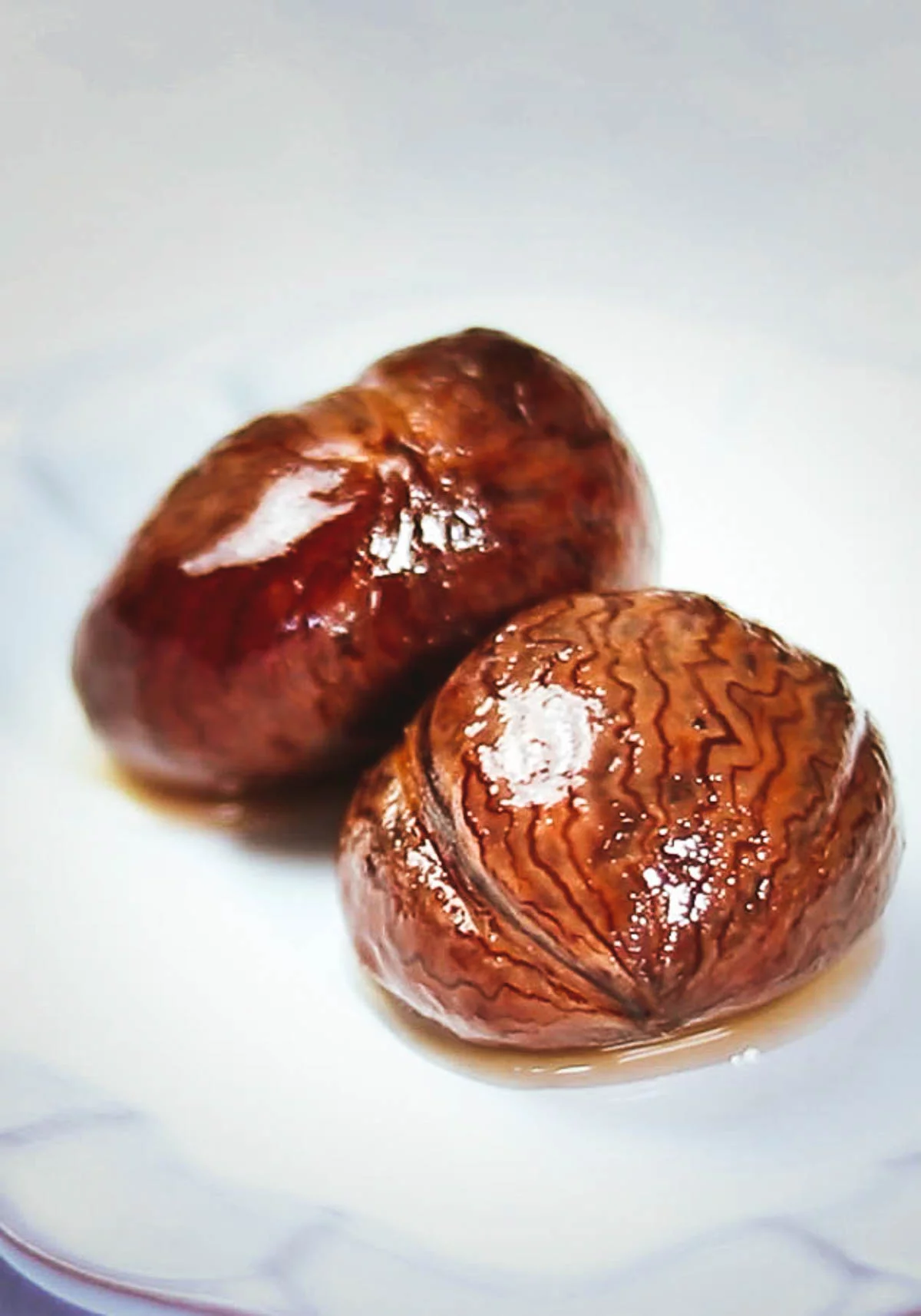
Jump to:
▶︎ Recipe Video
Chestnuts carefully prepared over time

The japanese chestnut compote "Shibukawani" is a traditional Japanese dish where the outer shell of chestnuts is peeled, leaving the brown inner skin intact.
The chestnuts are then boiled in water with baking soda, and sugar is added in multiple stages as they simmer in a sweet syrup. This process creates a candied texture and brings out the natural sweetness of the chestnuts while retaining the brown inner skin.
The "shibukawa" in the name refers to the slight bitterness of the chestnut skins. This bitterness adds depth and complexity to the overall flavor profile of the dish, balancing out the sweetness.
Shibukawani can be enjoyed on its own as a sweet snack or used as an ingredient in various desserts and confections. It can be added to cakes, pastries, or even used as a filling for traditional Japanese wagashi (sweet treats).
How to cook Shibukawani
Peel chestnuts
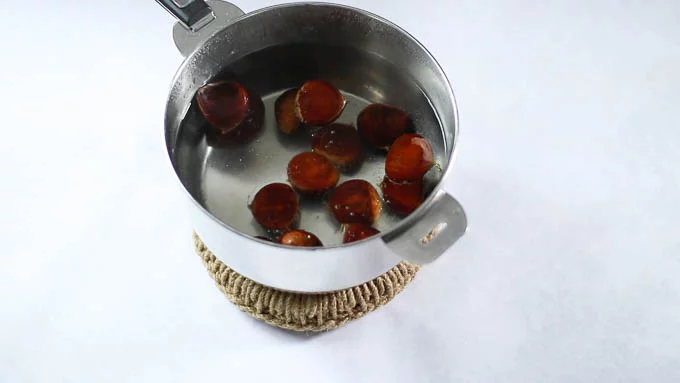
Bring a pot of water to a boil, add chestnuts and soak for 10 minutes.
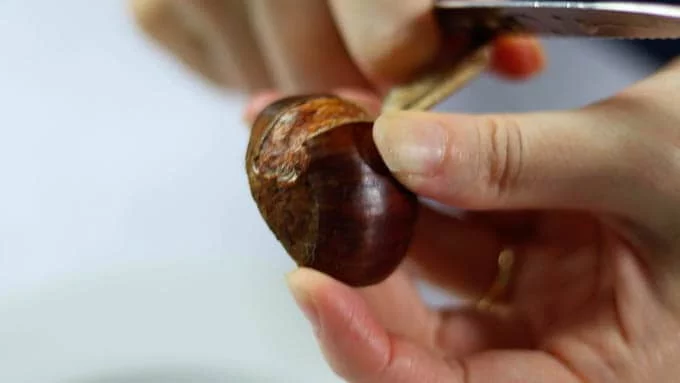
Peel off the outer hard skin, leaving the astringent skin (soft skin inside). Peel the lower hard part first, and then peel the upper part by tearing it. Peel slowly and carefully so as not to damage the astringent skin.
Boil chestnuts
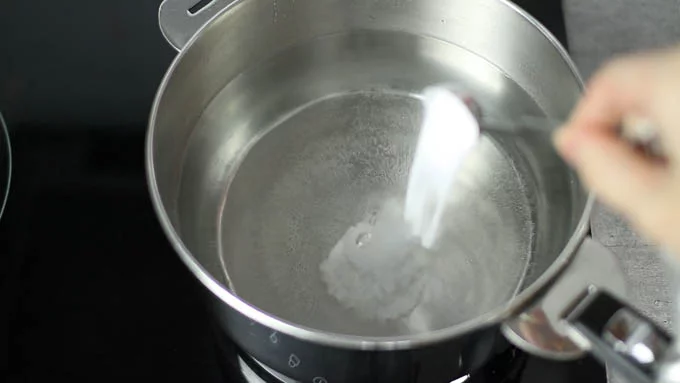
Boil water in a pot and add 2 teaspoons of baking soda.
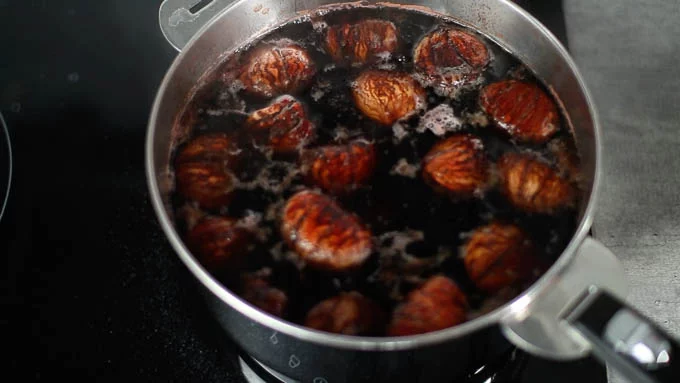
Bring to a boil, add chestnuts, reduce heat to medium and simmer for 10 minutes. You do not need to remove the stock because it will be boiled off.
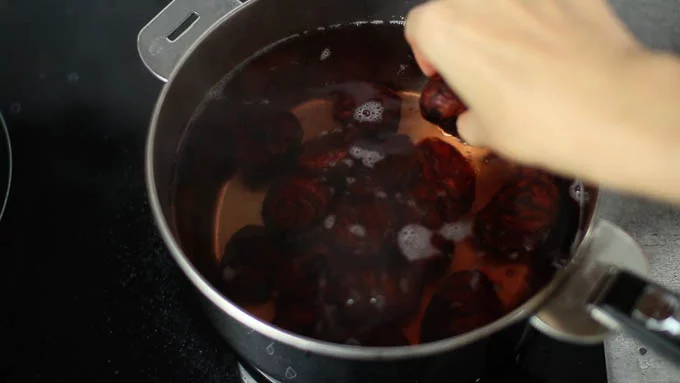
Transfer the chestnuts, still in the pot, to a colander and drain off the water. Immediately prepare clean water in the pot and bring it to a boil. Once it reaches a boil, boil the chestnuts again for about 10 minutes, then drain off the water.
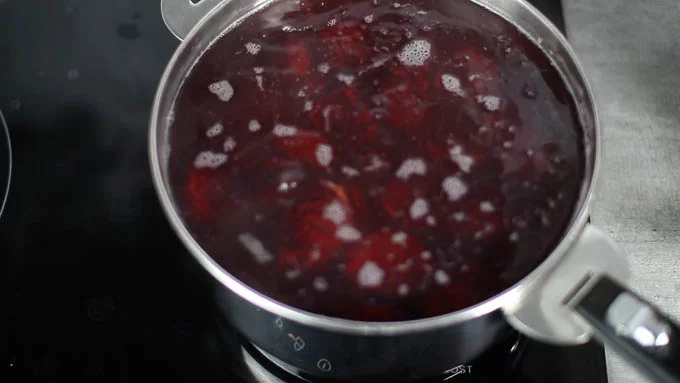
Repeat the blanching process 4-5 times. Initially, the boiling liquid may appear dark, but continue the blanching process until the liquid becomes transparent and slightly reddish in color.
Cleaning chestnuts

Using a bamboo skewer or your fingers, remove any black fibers or strands attached to the astringent skin. (Some of the black fibers are difficult to remove, so do not rub too hard as this may cause the astringent skin to tear. Leave the hard-to-remove parts as they are.)
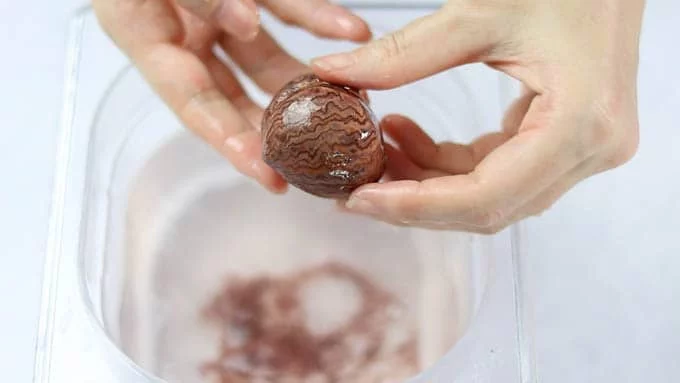
After removing the black fibers, you will notice a light brown color with a woodgrain-like pattern throughout the chestnut.
Weigh the chestnuts and prepare the sugar
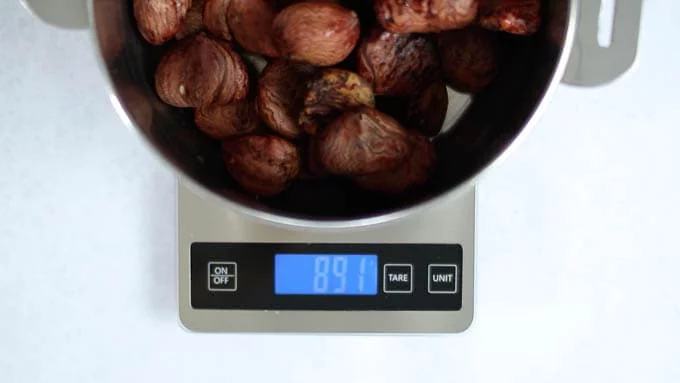
Once you have finished cleaning the astringent skins, weigh all the chestnuts and prepare 60 percent of the total weight in granulated sugar.
Add sugar and boil chestnuts
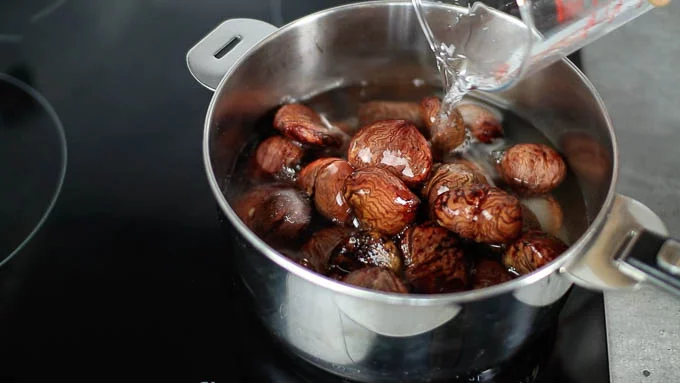
Put the chestnuts in a pot and add enough water to cover them, along with half of the granulated sugar. Place the pot over heat.
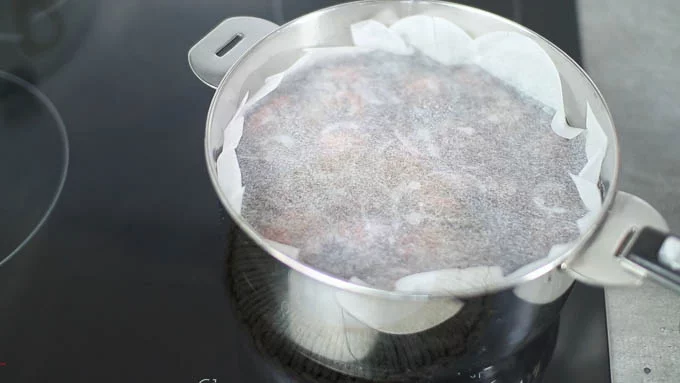
Bring to a boil and when all the sugar added at the beginning has dissolved, add the remaining sugar. Remove the scum, cover with a paper drop-lid, and boil for 20 minutes over low heat, just enough to release fine bubbles.
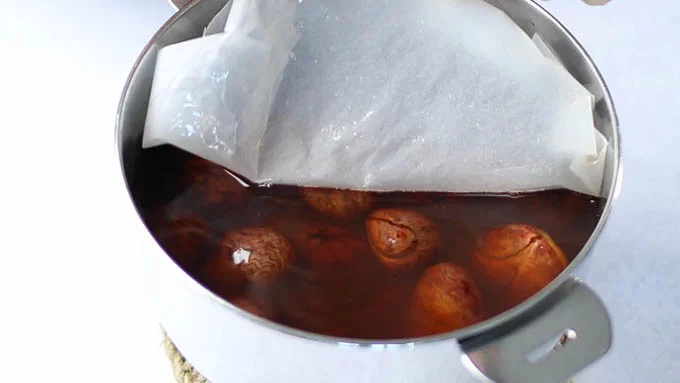
Turn off the heat and let the pot cool with the chestnuts in it. If the syrup seems too thin, avoid continuing to cook it directly with the chestnuts as it may cause them to lose their shape. Instead, take out a portion of the syrup and simmer it separately in another pot to reduce it. Once reduced, combine it with the original syrup.
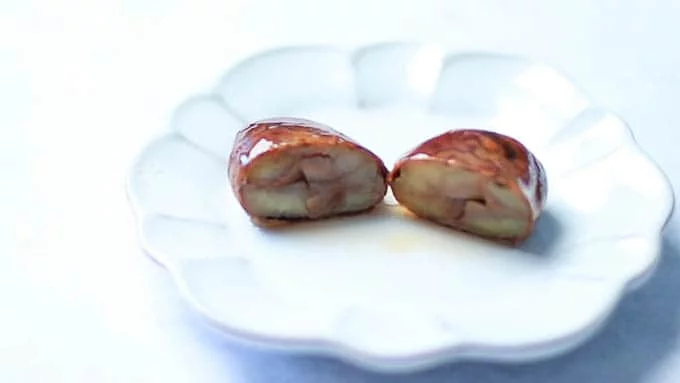
After it has cooled, you can optionally add brandy or other liqueurs for extra flavor. It can be enjoyed immediately, but the flavor will further penetrate the chestnuts and improve if you let them sit for a day or longer.
Let's make chestnuts "Shibukawani"

Making chestnut compote "Shibukawani" is indeed a labor-intensive and time-consuming process. Boiling and discarding the water multiple times, as well as cleaning the chestnuts, can be quite challenging, and you may feel tired and exhausted once you're done. However, when autumn comes, the desire to make it again resurfaces, undeterred by the efforts involved.
I encourage you to give it a try when you have time. Take it slowly and enjoy the process.
Storage
Refrigerator
Chestnut compote "Shibukawani" can be stored in the refrigerator along with the cooking liquid and last for about two weeks.
Freezer
You can also store chestnuts compote in the freezer by placing them in a suitable freezer-safe container. The recommended storage period for freezer storage is usually around 3 to 6 months.
Check out new recipes!
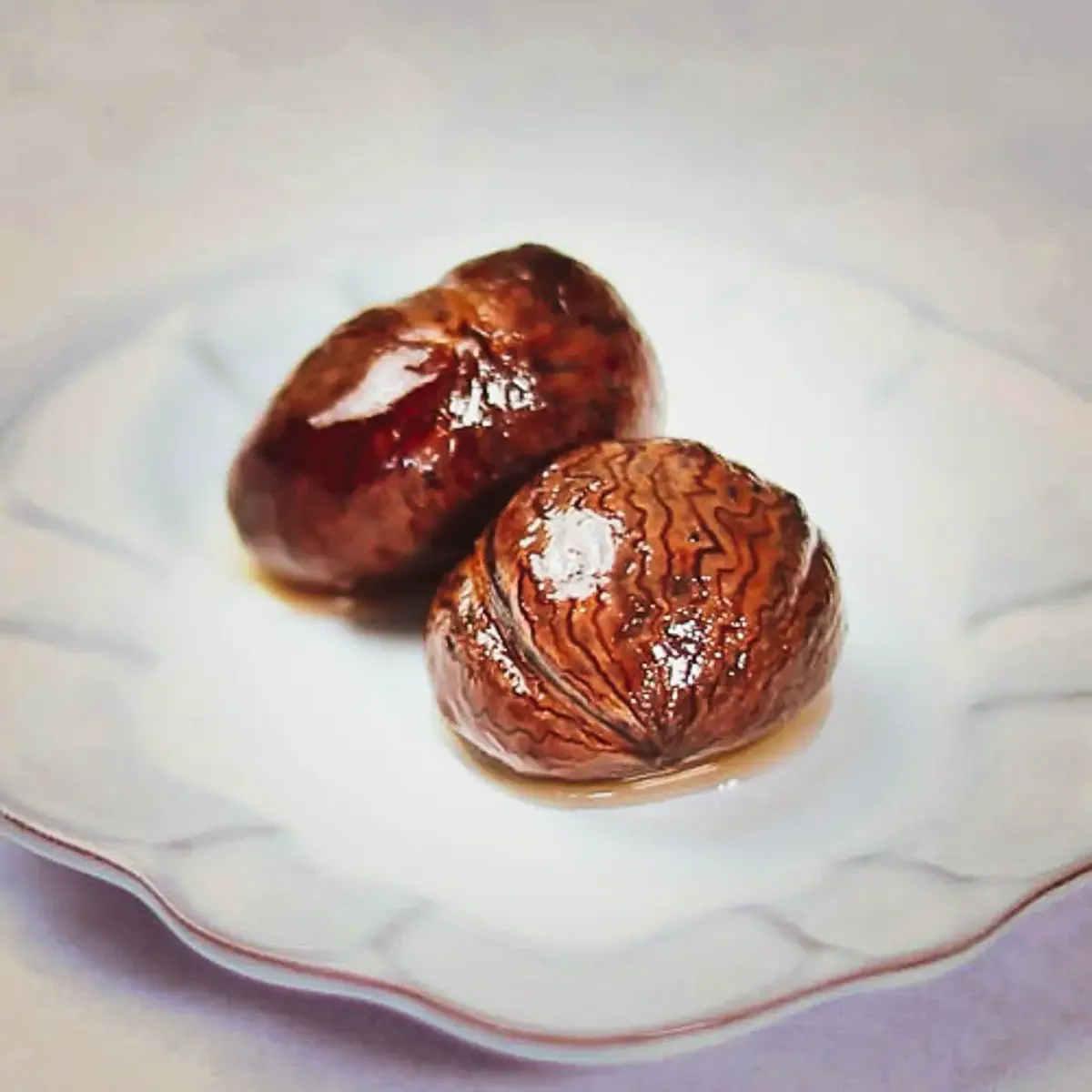
The Traditional Japanese Chestnut Compote "Shibukawani"
- Total Time: 3 hours
- Yield: 10 servings
- Diet: GlutenFreeDiet
Description
Chestnut simmered in its own astringent skin, which imparts a delightful bittersweet flavor, is a popular ingredient in Japanese sweets.
Ingredients
- 1 kg chestnuts
- Granulated sugar (60 per cent of the amount after peeling)
- 2 teaspoons baking soda
Instructions
Peel chestnuts
- Bring a pot of water to a boil, add chestnuts and soak for 10 minutes.
- Peel off the outer hard skin, leaving the astringent skin (soft skin inside). Peel the lower hard part first, and then peel the upper part by tearing it. Peel slowly and carefully so as not to damage the astringent skin.
Boil chestnuts
- Boil water in a pot and add 2 teaspoons of baking soda.
- Bring to a boil, add chestnuts, reduce heat to medium and simmer for 10 minutes. You do not need to remove the stock because it will be boiled off.
- Transfer the chestnuts, still in the pot, to a colander and drain off the water. Immediately prepare clean water in the pot and bring it to a boil. Once it reaches a boil, boil the chestnuts again for about 10 minutes, then drain off the water.
- Repeat the blanching process 4-5 times. Initially, the boiling liquid may appear dark, but continue the blanching process until the liquid becomes transparent and slightly reddish in color.
Cleaning chestnuts
- Using a bamboo skewer or your fingers, remove any black fibers or strands attached to the astringent skin. (Some of the black fibers are difficult to remove, so do not rub too hard as this may cause the astringent skin to tear. Leave the hard-to-remove parts as they are.)
- After removing the black fibers, you will notice a light brown color with a woodgrain-like pattern throughout the chestnut.
Weigh the chestnuts and prepare the sugar
- Once you have finished cleaning the astringent skins, weigh all the chestnuts and prepare 60 percent of the total weight in granulated sugar.
Add sugar and boil chestnuts
- Put the chestnuts in a pot and add enough water to cover them, along with half of the granulated sugar. Place the pot over heat.
- Bring to a boil and when all the sugar added at the beginning has dissolved, add the remaining sugar. Remove the scum, cover with a paper drop-lid, and boil for 20 minutes over low heat, just enough to release fine bubbles.
- Turn off the heat and let the pot cool with the chestnuts in it. If the syrup seems too thin, avoid continuing to cook it directly with the chestnuts as it may cause them to lose their shape. Instead, take out a portion of the syrup and simmer it separately in another pot to reduce it. Once reduced, combine it with the original syrup.
- After it has cooled, you can optionally add brandy or other liqueurs for extra flavor. It can be enjoyed immediately, but the flavor will further penetrate the chestnuts and improve if you let them sit for a day or longer.
Notes
- You can enjoy a rustic flavor by using sugars other than granulated sugar, such as brown sugar or cane sugar.
- If any chestnuts have their astringent skin damaged, you can use them in other sweets or dishes. (For chestnuts with significant damage, it's better to remove them during the boiling process as they might cause the cooking liquid to become dirty. However, personally, I sometimes boil chestnuts with small holes for tasting purposes.)
- Prep Time: 1 hours
- Additional Time: 0 hours
- Cook Time: 2 hours
- Category: Jam & Compote
- Cuisine: Japanese
Nutrition
- Serving Size: 1
- Calories: 246
- Sugar: 11
- Sodium: 254
- Fat: 2
- Saturated Fat: 0
- Unsaturated Fat: 2
- Trans Fat: 0
- Carbohydrates: 53
- Fiber: 5
- Protein: 3
- Cholesterol: 0


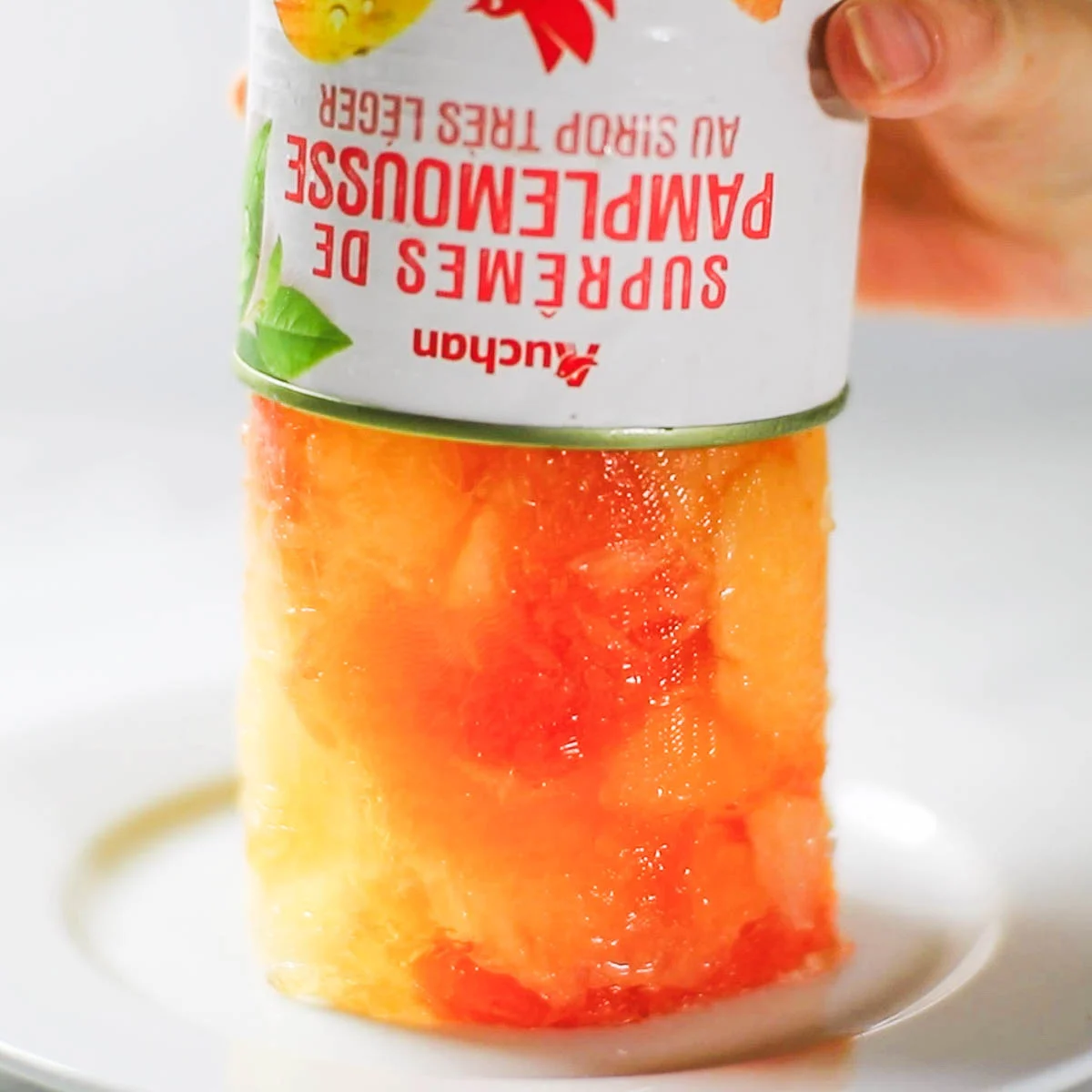
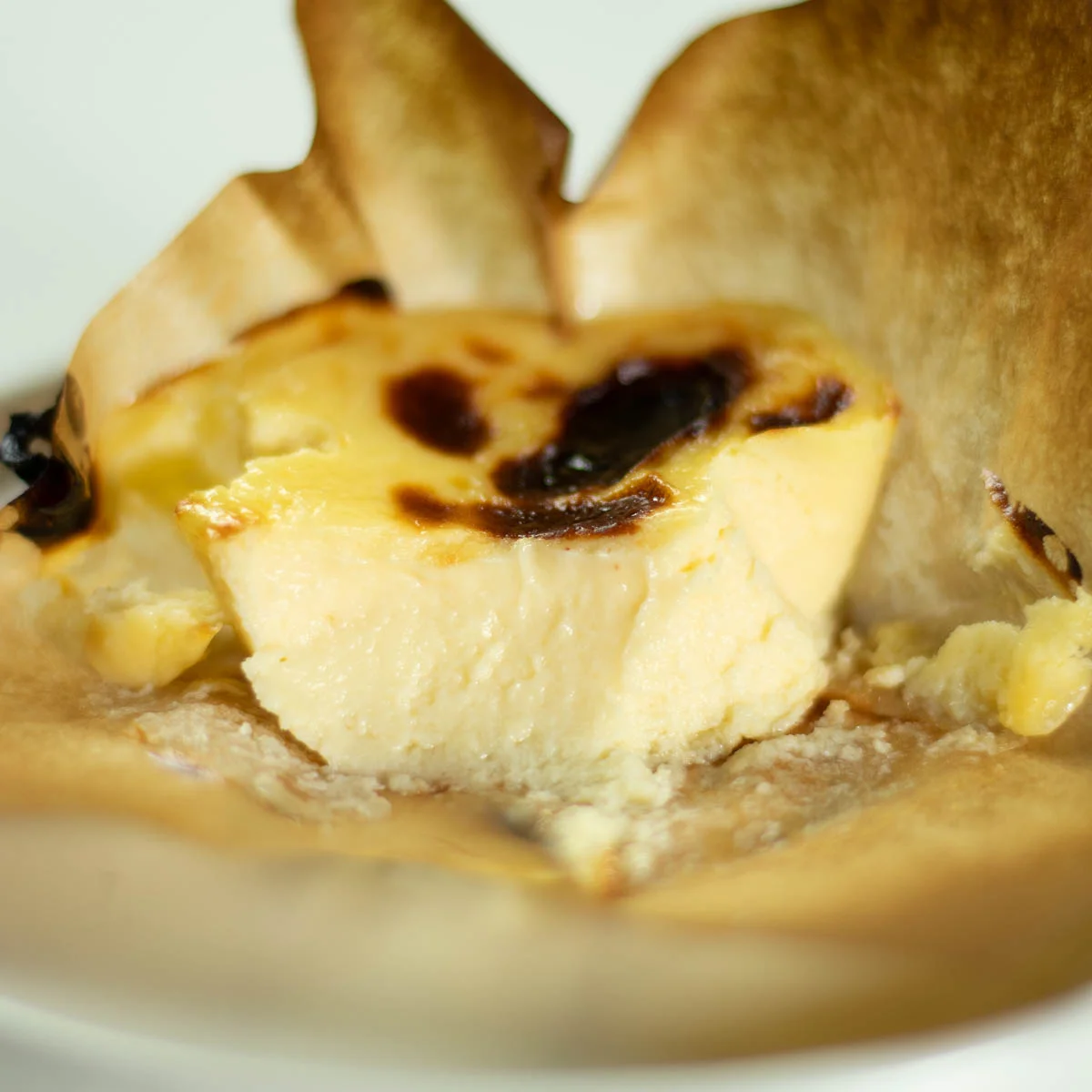
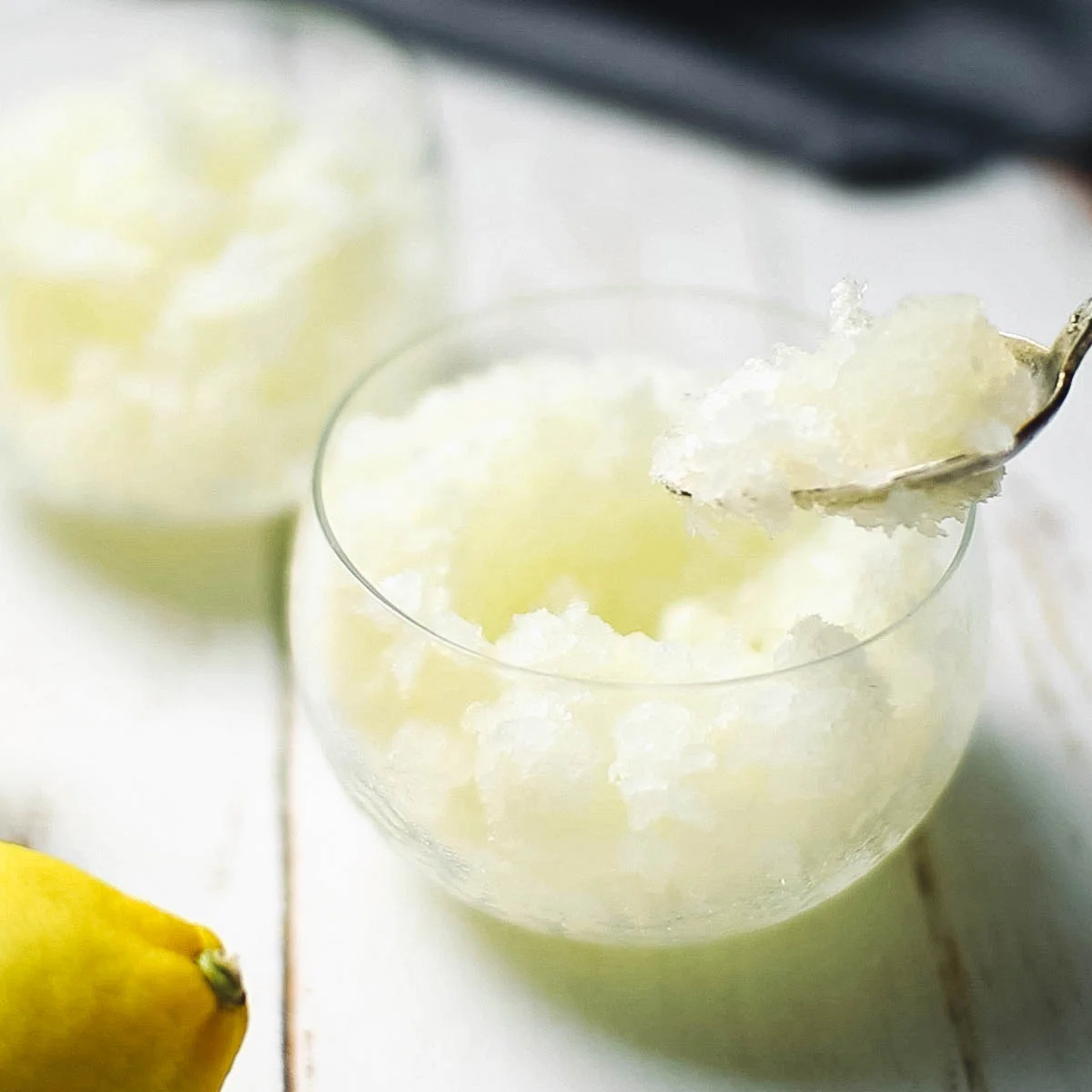
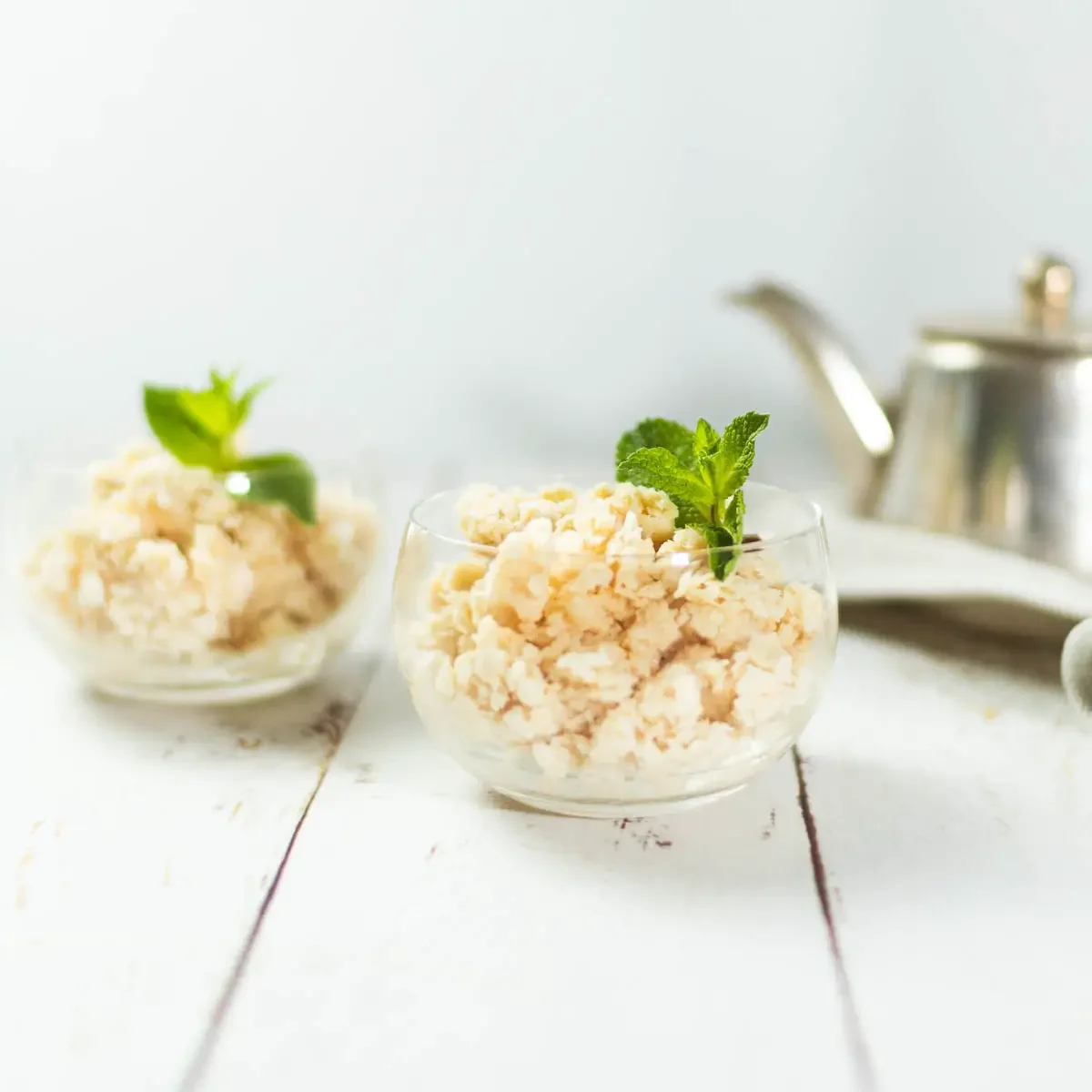


Leave a Reply